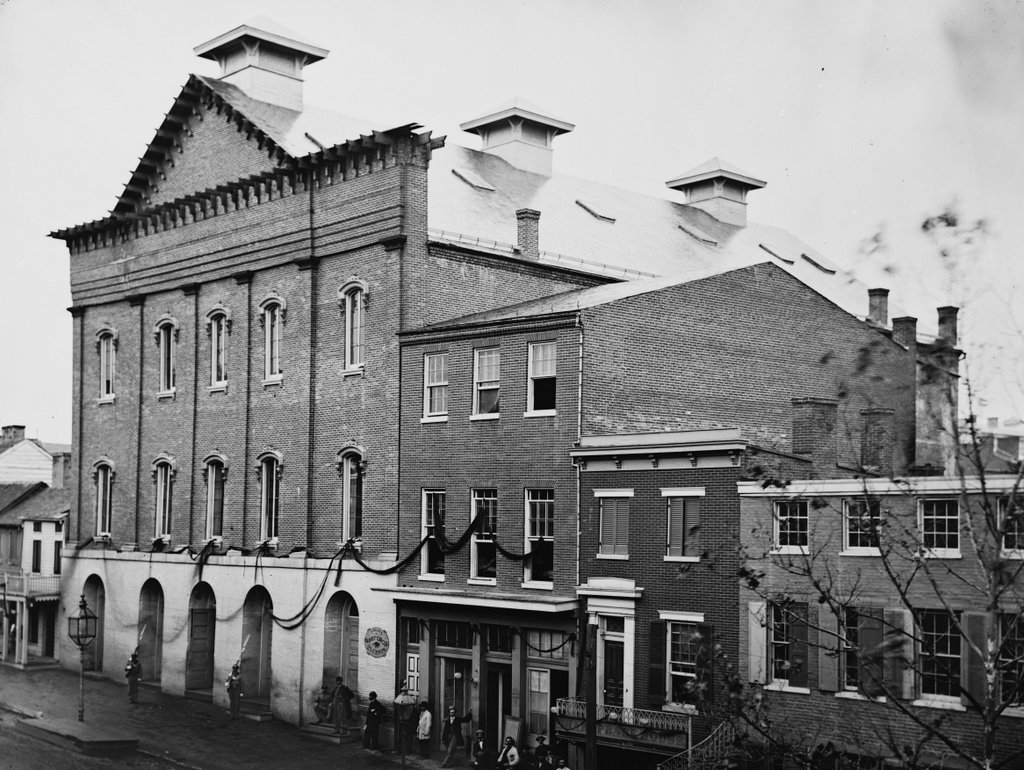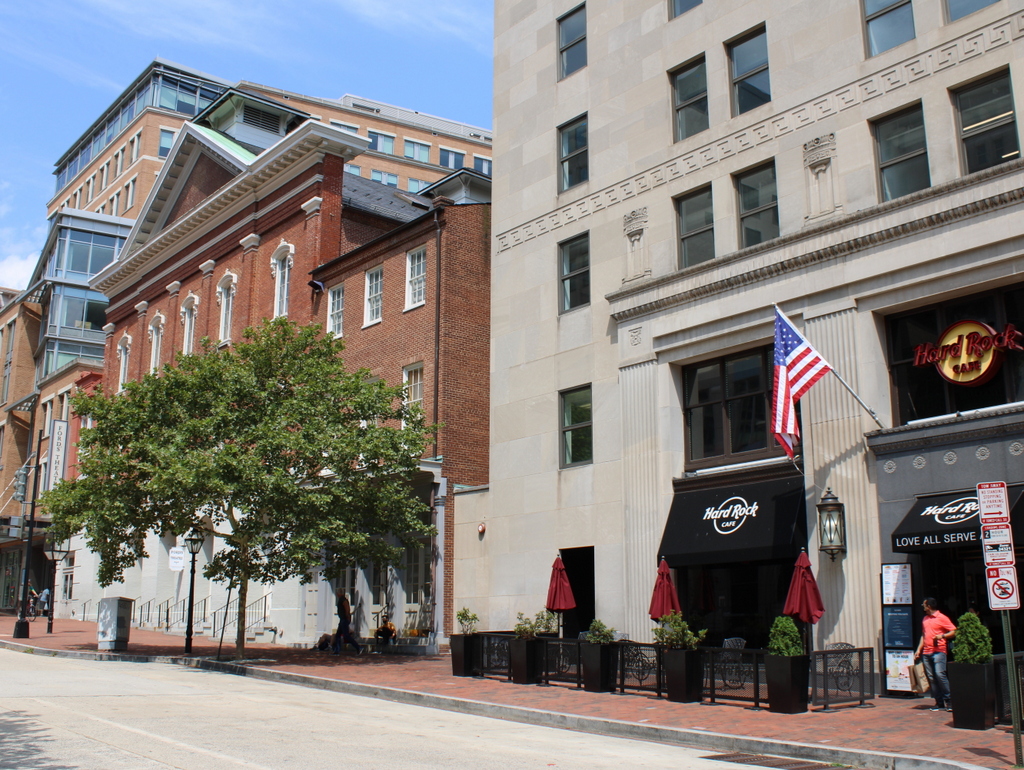The exterior of Ford’s Theatre on 10th Street NW in Washington, DC, in April 1865. Image courtesy of the Library of Congress. Civil War Glass Negatives and Related Prints collection.
The scene in 2021:
These two photos show Ford’s Theatre, which was the site of Abraham Lincoln’s assassination on the night of April 14, 1865. The origins of the theater date back to 1834, when the First Baptist Church was built here on this site, on the east side of 10th Street NW, between E and F Streets. The church congregation remained here until 1859, when it merged with another Baptist church, and in 1861 the building here was sold to John T. Ford. He converted it into a theater, and it opened in 1862 as Ford’s Athenaeum.
However, the original building was destroyed by a fire in December 1862. Ford subsequently rebuilt here on the same site, and the new Ford’s Theatre opened on August 27, 1863, with a performance of The Naiad Queen. The country was in the midst of the Civil War at the time, but for many Washingtonians the theater provided a welcome diversion from the conflict. Among them was Abraham Lincoln, who regularly attended plays here, including a November 9, 1863 performance of The Marble Heart, starring his future assassin John Wilkes Booth.
Lincoln visited the new theater on at least eight other occasions. On the night of his assassination, he was watching Our American Cousin, accompanied by his wife Mary Todd Lincoln, Major Henry Rathbone, and Rathbone’s fiancée Clara Harris. They were seated in the presidential box to the right of the stage when, around 10:15 p.m., John Wilkes Booth entered the box and shot Lincoln in the head with a pistol. After a brief struggle with Rathbone, Booth jumped down to the stage and made his escape out a side door.
There were several doctors in attendance at the theater. They rendered what aid they could, but determined that his wound was fatal. Rather than attempting to bring him all the way back to the White House, they instead brought him across the street to the Petersen House, where he died at 7:22 the following morning. The first photo in this post was taken only a few days after the assassination, showing the exterior of the theater and several surrounding buildings. Immediately to the right of the theater was the Star Saloon, a three-story brick building where John Wilkes Booth had a drink of whiskey and water immediately before entering the theater to kill Lincoln.
Following the assassination, the government determined that it would be inappropriate to continue using the building as a theater. As a result, they leased—and then later purchased—it from Ford, and converted it into office space. In the process, the interior was completely gutted, and three new stories were built in the space that had once housed the theater. These floors were occupied by the War Department’s Division of Pensions and Records, and also by the Army Medical Museum.
The building would end up being the site of another tragedy on June 9, 1893. It was in the midst of being modernized with the installation of an electric plant, which involved excavation work in the basement. In the process, one of the supporting piers collapsed, causing a portion of the upper floors to likewise collapse. The building was occupied at the time, and 22 workers were killed in the collapse, with many others seriously injured.
The disaster did not affect the exterior walls, and the interior was subsequently repaired. It continued to be used by the Division of Records and Pensions for many years, but in 1932 it became the site of a museum in memory of Lincoln, and a year later the building was acquired by the National Park Service. Then, in the 1960s the interior was reconstructed into a theater, based on its original design.
Today, Ford’s Theatre is still standing, and it is still used as a performing arts venue while also serving as an important Washington landmark. However, because of the many renovations over the years, there is very little left of the original structure aside from the brick exterior walls. As for the adjacent Star Saloon, the present-day building is entirely a reconstruction. The original building was demolished in 1930 to create a parking lot, but it was rebuilt in the 1960s as part of the reconstruction of the theater. Both of these buildings, along with the Petersen House across the street, are still operated by the National Park Service as part of the Ford’s Theatre National Historic Site.


